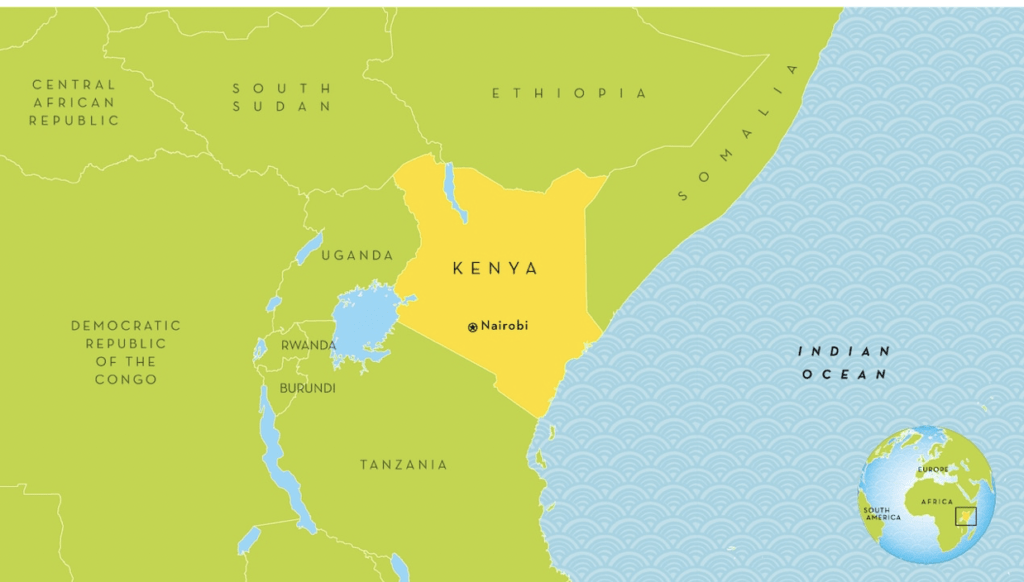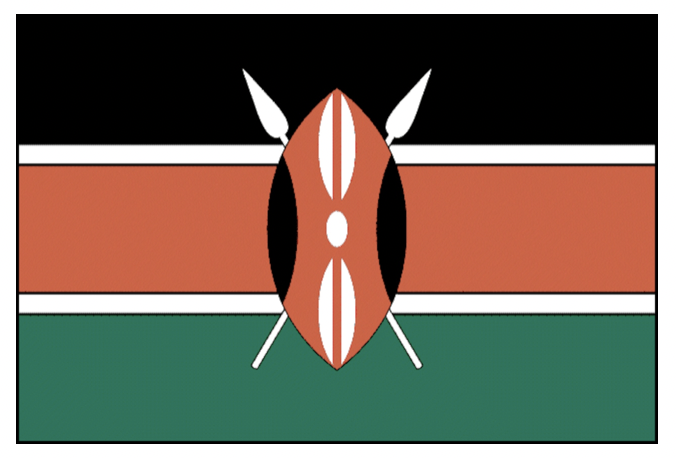Facts About Kenya
Kenya Basic Facts
Fun Facts About Kenya
Video About Kenya
History of Kenya
Due to Kenya’s location between the Indian Ocean and Lake Victoria, people from all over Africa and the Middle East have traveled and traded across it for centuries. This has created a diverse culture with many ethnic groups and languages.
The bones of one of the earliest human ancestors ever found were discovered in Kenya’s Turkana Basin.
Slavery is a big part of Kenya’s history. During the 1600s and 1700s, many Kenyans were kidnapped and taken as slaves by Arabs, Europeans, and Americans. By the mid-19th century, slavery was outlawed by most countries, but by then, thousands of Kenyans and other East Africans had been enslaved in countries throughout the world.
Map of Kenya

Kenya Flag Activity

Famous Kenya Landmarks
Maasai Mara National Reserve
Masai Mara is Kenya’s most popular game reserve. It is a large area of wilderness where animals such as lions, cheetahs, elephants, leopards, zebras, wildebeests, and hippos can live safely.. It’s in southwestern Kenya near Tanzania and continues into Serengeti National Park. It’s an area through which the Great Migration passes, an annual journey of wildebeests, zebras, gazelles, and other game animals to move due to availability of grazing.
Featured Important Kenyan Person: Wangari Maathai
Professor Wangari Maathai was a Kenyan Environmentalist and Human Rights Activist. She was the first African woman to receive the very prestigious Nobel Peace Prize of 2004. Maathai has fought very hard, even against oppressive regime, to ensure a sustainable environment and better quality for women and the citizens of Kenya.
In her acceptance speech for the Nobel Price, she said, “I would like to call on young people, in particular, to take inspiration from this prize. Despite all the constraints that they face, there is hope in the future in serving the common good. What my experiences have taught me is that service to others has its own special rewards.”






